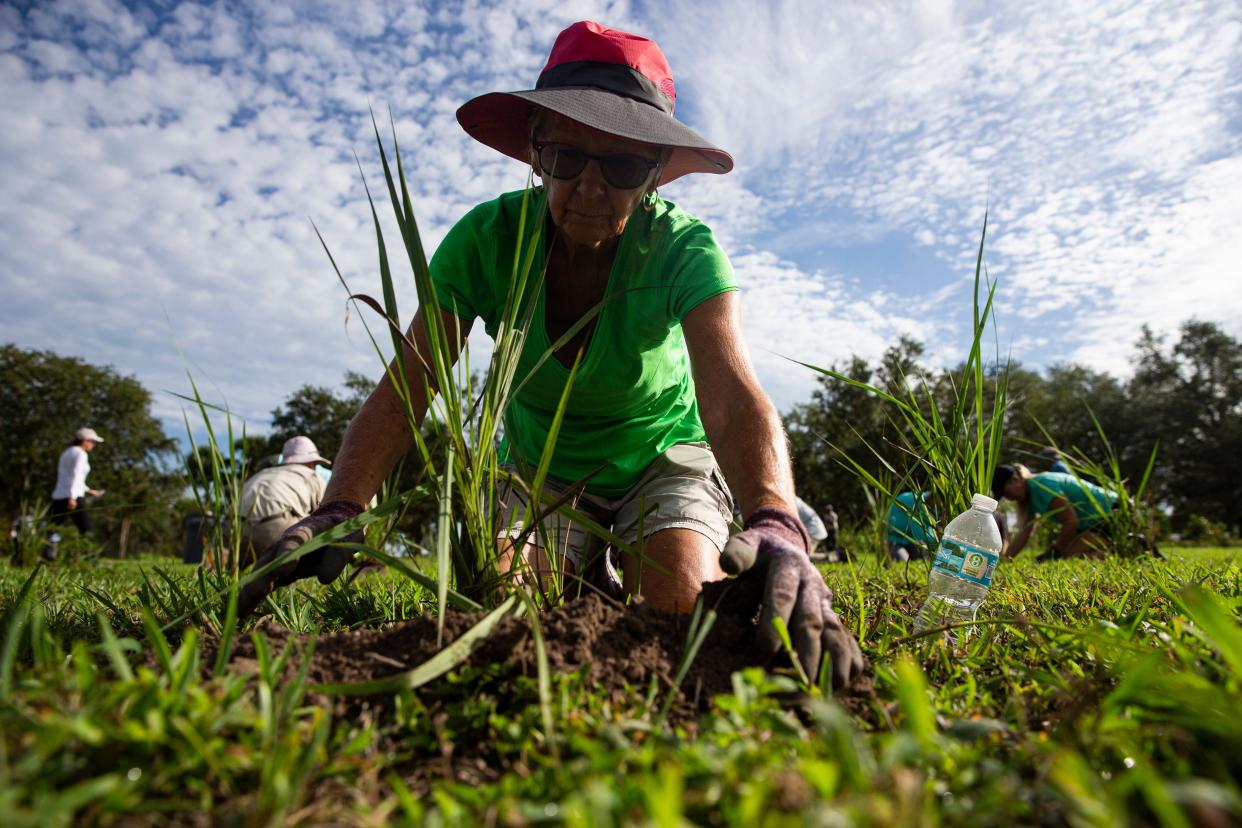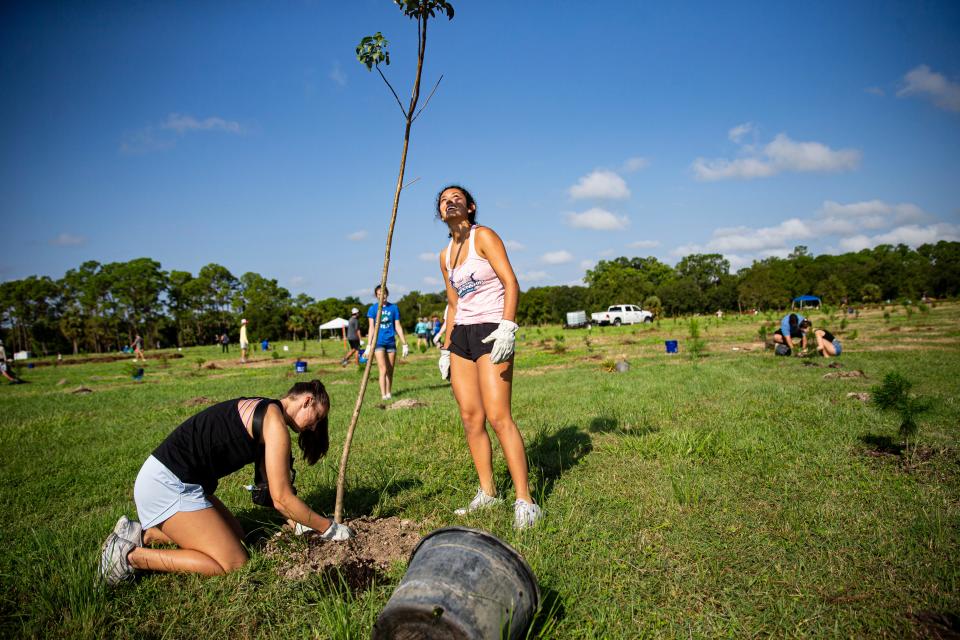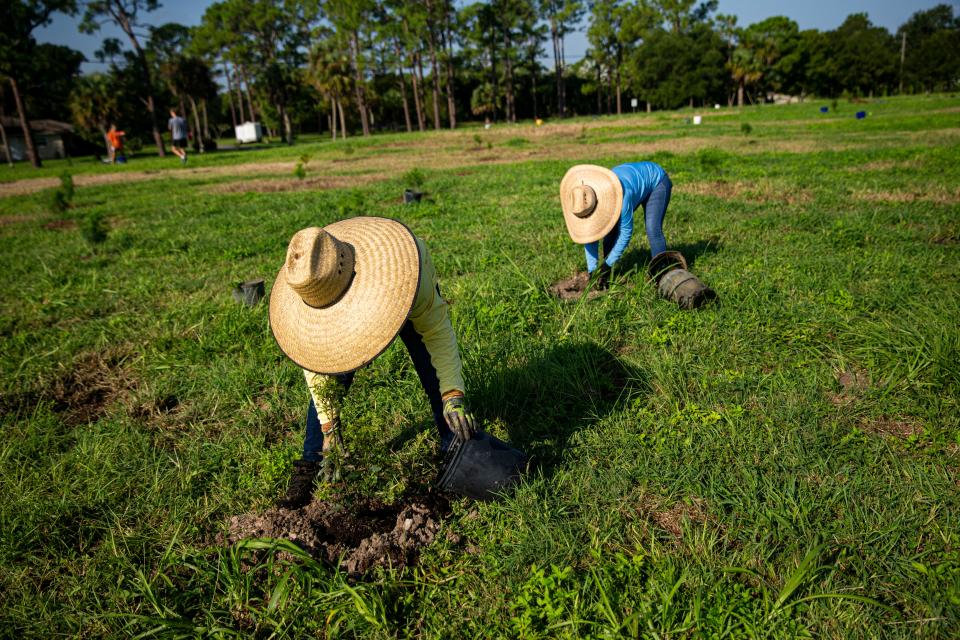Setting the table for a pollinator feast: Volunteers plant thousands of flowers at Olga lock

Early on a Saturday morning, when many were sensibly still asleep, four members of the Alva Garden Club rolled into the Caloosahatchee-front W.P. Franklin Lock, ready to work. Their mission: help get thousands of baby plants into what was once a barren, eight-acre spoil field.
The U.S. Army Corps of Engineers-operated lock and dam is one of three on the river, which, thanks to human engineering, runs from Lake Okeechobee to the Gulf of Mexico. Built in 1965, it's named to honor former hardware magnate and Fort Myers mayor Walter Franklin, who pushed for the cross-state, coast-to-coast route from Stuart on the Atlantic side to Punta Rassa over here. Historian Karl Grismer wrote that Franklin's lobbying assured that "that the necessary surveys were made and the project started in 1932."
The Corps manages the lock and surrounding area, which includes a popular boat launch and park. Though residents have long used the riverfront recreation area for picnics, parties and gatherings, the approximately eight and a half-acre field between the parking lot and the road ‒ former river bottom, deposited during various dredging projects ‒ had been pretty much left alone, save for mowing.
More: 'She was just a Southern lady.' Ruby Daniels' legacy lives and blooms in conserved Alva ranch lands
More: Cultivating growth: David and Linda Lucas work to nurture thriving landscape, SWFL community
That all changed in September, when volunteers began reforesting the naked acreage with hundreds of trees and shrubs as part of the Corps' Engineering with Nature Program, says Greg Jones, chief of the South Florida Operations Office in Clewiston. He points out that beyond the Corps' flood control, navigation and safety functions, providing recreational and educational spaces is also part of the agency's mission. Three days later after the first workday, Hurricane Ian roared through. Fortunately, 80% of the plantings survived, says Natural Resources Program Manager Nelson Colón, who helped get the grant funding to make the project possible.

Nine months later, with the bigger trees and shrubs well on their way to being established, the next step was to fill in the understory with native pollinator plants. (Bees and butterflies are more than beautiful; they make life as we know it possible. Fully a third of all food we eat depends on insect or animal pollination, scientists say, and three-quarters of the planet's flowering plants depend on pollinators for their continued existence.)
That's where the Alva Garden Club and some 40 other helpers came in. The goal was to get about 9,000 plants into the ground. They included favorite Florida wildflowers like tickseed, purple coneflower, porterweed, scarlet sage, black-eyed Susan, milkweed, sunshine mimosa and blanket flower as well as Fakahatchee grass, muhly grass and wire grass.
Overqualified as he was, Albion College botany professor emeritus Dan Skean got busy tucking baby Fakahatchee grass plugs into tiny holes as his wife Viveca worked nearby. By the time they and fellow Alva Garden Club volunteers Nancy Lee and Joyce Pilewski were done, the field looked a lot different, and Lee was looking forward to watching the plants take hold and flourish.
So was the Corps' Megan Parsons, a natural resources specialist who helped organize the day.
“Can you imagine how beautiful this natural area will look in the years to come, when the canopy and understory have filled in? It will be something that the volunteers will be able to feel very proud of when they come back, and maybe bring their children and grandchildren to walk together along the forested paths and enjoy many years into the future. What a wonderful legacy that will be.”

Explore more
For more about the Engineering with Nature Project initiated at W.P. Franklin South Recreation Area in 2022, see: https://ewn.erdc.dren.mil/?p=8712
For more information about pollinators and how to help them, visit https://pollinator.org/.
This article originally appeared on Fort Myers News-Press: Volunteers create pollinator-friendly landscape at Olga lock

